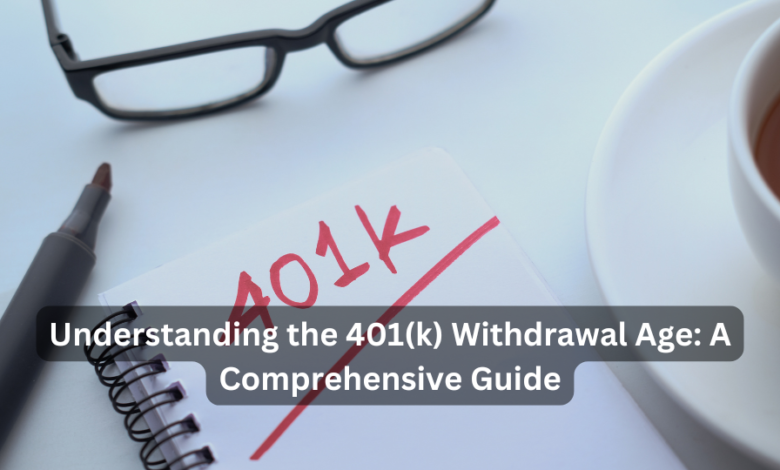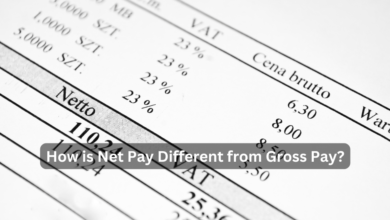Understanding the 401(k) Withdrawal Age: A Comprehensive Guide

Planning for retirement is a critical phase in one’s financial journey. For many, their 401(k) plan serves as a cornerstone of their retirement savings strategy. However, knowing when and how to withdraw from your 401(k) is equally important to maximizing your retirement funds and minimizing tax penalties. This comprehensive guide will walk you through the essential aspects of the 401(k) withdrawal age and how to navigate the rules to optimize your retirement planning.
What is a 401(k)?
A 401(k) is a retirement savings plan sponsored by an employer. It allows employees to save and invest a portion of their paycheck before taxes are taken out. Taxes are paid when the money is withdrawn during retirement, providing potential tax advantages for participants.
The Importance of Understanding the 401(k) Withdrawal Age
One of the most critical aspects of a 401(k) plan is understanding when and how you can withdraw funds without incurring penalties. Missteps in this area can lead to significant financial penalties, which can eat into your hard-earned retirement savings.
The Key Age Milestones for 401(k) Withdrawals
- 59 ½ Years Old: The Early Withdrawal Penalty Ends
The magic number for penalty-free withdrawals from a 401(k) is 59 ½. This is the earliest age at which you can withdraw funds from your 401(k) without incurring the 10% early withdrawal penalty imposed by the IRS. However, regular income taxes will still apply to any distributions.
It’s important to note that this rule applies to traditional 401(k) plans, where contributions are made with pre-tax dollars. Roth 401(k) plans, which are funded with post-tax dollars, have different withdrawal rules.
- 72 Years Old: Required Minimum Distributions (RMDs)
At age 72, the IRS mandates that you begin taking Required Minimum Distributions (RMDs) from your 401(k). These are the minimum amounts you must withdraw each year, calculated based on your life expectancy and the balance of your account. Failing to take RMDs can result in significant tax penalties – up to 50% of the amount that should have been withdrawn.
Early 401(k) Withdrawal: What Happens If You Withdraw Before 59 ½?
While the general rule is that withdrawals made before the age of 59 ½ are subject to a 10% penalty, there are certain exceptions where this penalty can be avoided:
- Substantially Equal Periodic Payments (SEPP): If you agree to take substantially equal periodic payments, based on your life expectancy, you can avoid the early withdrawal penalty.
- Disability: If you become permanently disabled, you can withdraw from your 401(k) without incurring the 10% penalty.
- Medical Expenses: If your unreimbursed medical expenses exceed 7.5% of your adjusted gross income, you may be able to withdraw penalty-free.
- Qualified Domestic Relations Order (QDRO): If a court orders you to give part of your 401(k) to a spouse or dependent during a divorce, the withdrawal can be made without penalty.
Understanding Required Minimum Distributions (RMDs)
Once you reach 72 years old, you are required to start taking Required Minimum Distributions (RMDs) from your 401(k). The IRS sets the minimum amount you must withdraw each year, which is based on your account balance and life expectancy. Here’s what you need to know about RMDs:
- When to Begin: Your first RMD must be taken by April 1st of the year following the year you turn 72. After that, you must take an RMD each year by December 31st.
- How RMDs are Calculated: The amount of your RMD is determined by dividing your 401(k) account balance as of December 31st of the previous year by your life expectancy factor, which is determined by the IRS.
- Tax Implications: RMDs are considered taxable income, and if you fail to take your RMD, you could be subject to a hefty 50% excise tax on the amount you should have withdrawn.
Should You Delay 401(k) Withdrawals?
Delaying 401(k) withdrawals past the age of 59 ½ can provide certain advantages, especially if you’re in a higher tax bracket or don’t immediately need the funds. Here’s why delaying withdrawals might make sense:
- Continued Tax-Deferred Growth: By keeping your funds in the 401(k) account, your investments can continue to grow tax-deferred, allowing your retirement savings to potentially increase in value.
- Avoiding RMDs with a Roth Conversion: If you convert your traditional 401(k) into a Roth IRA, you won’t be subject to RMDs, and future withdrawals could be tax-free.
- Lowering Your Taxable Income: Delaying withdrawals could also help you stay in a lower tax bracket, as you’ll avoid counting 401(k) distributions as taxable income for as long as possible.
The Impact of Roth 401(k) on Withdrawal Age
The Roth 401(k) operates differently from a traditional 401(k), particularly when it comes to withdrawals. With a Roth 401(k), contributions are made with after-tax dollars, meaning you’ve already paid taxes on the money. As a result, qualified withdrawals in retirement are tax-free. Here’s what you need to know:
- Penalty-Free Withdrawals: Just like with a traditional 401(k), you can begin making penalty-free withdrawals from your Roth 401(k) at age 59 ½, provided that you’ve held the account for at least five years.
- No RMDs for Roth IRAs: While traditional 401(k) plans are subject to Required Minimum Distributions, Roth IRAs are not. This means that if you roll your Roth 401(k) into a Roth IRA, you can continue to let your funds grow without being forced to take withdrawals at age 72.
What to Do If You Need Access to Your 401(k) Funds Early
While it’s ideal to wait until the appropriate age to withdraw from your 401(k), life sometimes necessitates early access to these funds. If you find yourself needing to tap into your 401(k) before age 59 ½, it’s crucial to understand your options for minimizing penalties:
- Hardship Withdrawals: In certain cases, such as medical emergencies or disability, you may qualify for a hardship withdrawal. While these withdrawals are still subject to income tax, they may be exempt from the 10% penalty.
- Borrowing from Your 401(k): Some 401(k) plans allow participants to take out a loan against their account. These loans generally must be repaid within five years, and while the interest is paid back to your account, failure to repay the loan can result in penalties and taxes.
Conclusion: Strategize Your 401(k) Withdrawals Wisely
Understanding the rules surrounding the 401(k) withdrawal age is crucial for maximizing your retirement income and avoiding unnecessary penalties. Whether you’re nearing retirement age or just beginning to think about how to manage your 401(k), planning your withdrawals carefully can ensure that you make the most of your hard-earned savings. Always consult with a financial advisor to explore the best strategies for your individual circumstances.




